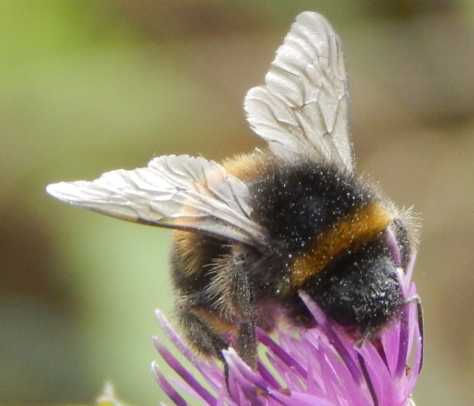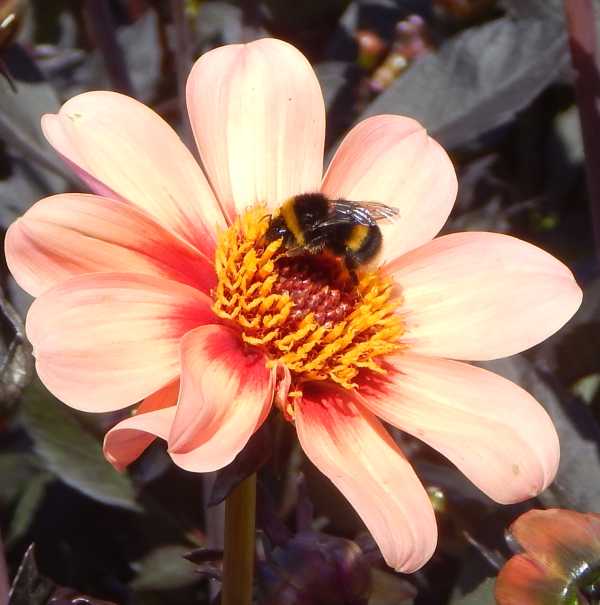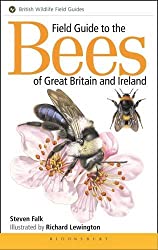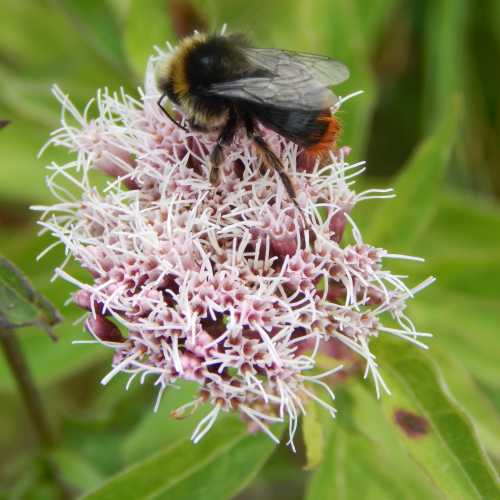British Bumble Bees
Here is a list of British bumble bees, with Latin and common
names where known. Included is Bombus hypnorum - not originally a UK bumble bee species, but a
relatively recent arrival in Britain.
Click on the links to read more about the species (this is currently work in progress).
List of British Bumble Bees
Social Bumble bees

Common Species
|
- White tailed bumble bee | |
|
– Buff tailed bumble bee | |
|
– Early bumble bee or Early nesting bumble bee | |
|
– Common carder bee | |
|
– Garden bumble bee | |
|
- Red-tailed bumble bee | |
|
Bombus jonellus |
– Heath bumble bee |
|
– Tree bumble bee |
Less Common Social British Bumble bees
|
Bombus soreensis |
– Broken-belted bumble bee |
|
Bombus monticola |
- Mountain, Blaeberry or Bilberry bumble bee |
|
– Red shanked carder bee | |
|
Bombus ruderatus |
– Large garden bumble bee |
|
Bombus humilis |
- Brown banded carder bee |
|
Bombus sylvarum |
– Shrill carder bee |
|
Bombus muscorum |
– Moss carder bee |
Very Rare Bumble Bee Species
|
Bombus distinguendus |
– Great yellow bumble bee |
Recently Re-introduced
|
Bombus subterraneous |
– Short-haired bumble bee |
Extinct
|
Bombus pomorum Bombus cullumanus |
Cuckoo Bumble Bees Of Britain
|
Bombus vestalis |
– Southern cuckoo or Vestal cuckoo bee |
|
Bombus bohemicus |
– Gypsy cuckoo bee |
|
– Barbut’s cuckoo bee | |
|
Bombus campestris |
– Field cuckoo bee |
|
– Forest cuckoo bee | |
|
Bombus rupestris |
– Red-tailed cuckoo or Hill cuckoo bee |
Read more about cuckoo bumble bees.
Why Have The Populations Of Some British Bumble Bees Declined?
The reasons are complex, however, habitat is a key issue. Generally, the more adaptable bumble bee species in terms of habitat, food and nesting requirement, have remained more common.
Bumble bees requiring very specific habitats, foraging and food have suffered greatly due to habitat destruction. For example, those relying on grasslands and wildflower meadows have suffered due to changing land management practices, the industrialisation of farming, destruction of hedgerows etc.
In addition to habitat loss, all bees face the challenge of pesticide use across large areas of land.
Resources
Benton, Ted. Bumblebees: The Natural History & Identification of the Species Found in Britain. Collins 2006.
If you found this page helpful or interesting, I'd really be grateful if you would share it with others - if not this page, perhaps another, such as Gardening For Bees.
Thank you so much :) .


